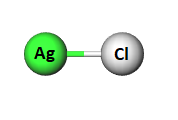Hydrogen sulphate also known as bisulphate, is an odorless anion in the form of a white powder. It is made up of one hydrogen, one sulphur and four oxygen atoms. The Lewis structure of this molecule has to be known first to better understand its physical and chemical properties. The structure will help in understanding the arrangement of atoms, bond formation and shape of the molecule.
| Chemical Name | Hydrogen Sulfate |
| HSO4 – Valence electrons | 32 |
| Molecular Weight/ Molar Mass | 97.064 g/mol |
| Boiling Point | N/A |
| Melting Point | 59 °C |
| Chemical Formula | HSO4– |
In this blog post, we will look at the HSO4 – structure and properties. But for knowing the Lewis structure of any molecule, we first need to know the total number of valence electrons.
HSO4 – Valence electrons
The electrons present in the outer shell of the atom are the ones that participate in bond formation and are known as valence electrons.
To know the Lewis structure we will first calculate the total number of valence electrons for HSO4 –
Total number of valence electrons – Valence electrons of Hydrogen + Valence electrons of Sulfur+Valence electrons of Hydrogen
Sulfur has 6 valence electrons in its outer shell.
Oxygen has 6 valence electrons in its outer shell, but as we know there are 4 oxygen atoms in this molecule. Hence we will multiply the number by 4. So now there are 24 valence electrons for all oxygen atoms.
However hydrogen has two valence electrons in this structure.
= 6+24+2
= 32 valence electrons
So for the HSO4 – Lewis structure, we have a total of 32 valence electrons.
HSO4– Lewis structure
A Lewis structure is a pictorial presentation of how atoms are arranged in the molecule. As sulfur atom is the least electronegative, we will put it in the center. Now we have four Oxygen atoms that will be kept around the Sulfur atom, and then the Hydrogen atom will go on the outside of one of the Oxygen.
We’ll first put a pair of electrons between atoms to form bonds. Place a pair of electrons between each Oxygen and Sulfur atom to show bonds. Repeat the same for two Hydrogen atoms. Placing electrons for showing bonds will use up 12 valence electrons out of 32. After sharing valence electrons Hydrogen has attained a stable structure as it only needs two electrons to complete its octet.
So now we go around and fill the octets for the Oxygen atoms as. Doing so will use all 32 valence electrons. As the central Sulfur atom is forming bonds with 6 atoms, it is sharing all its valence electrons. As sulfur is a group 13 element it can expand its orbitals to accommodate more electrons.
Sulfur has more than 8 valence electrons, each of the Oxygen atoms has an octet, and the Hydrogen, here, has 2, so that its outer shell is complete. But as Sulfur is in period 3 on the periodic table, let us check the formal charges on each atom to make sure they’re as close to zero as possible.
When we check the formal charges, we can see that Sulfur in the center has a +2 charge, where each of the Oxygen atoms have a -1 charge. As we would like those formal charges to be as closer to zero if possible, we take a pair of electrons from the outside of the Oxygen and form a double bond with the Sulfur, that will change the formal charges so that this Oxygen now has a formal charge of 0 and the Sulfur has a charge of +1.
So let’s do that again over here. After forming a double bond here, we now have a formal charge of 0 on this Oxygen and the Sulfur is 0. That leaves us with a -1 formal charge on this Oxygen here. Due to such arrangement, the molecule has a negative charge up there. So the overall charge on this is -1, just like in the HSO4- chemical formula right here. The last thing we need to do is put brackets around this, because it has a negative charge.
Hence this is the most stable Lewis structure for HSO4-.

Properties of HSO4-
- Sodium Bisulfate (NaHS04) which is the pure substance starts melting at 185°C and begins to lose water and forms the hydrogen sulphate ion (HSO4). The structure is similar to that of methane.
- It is classified as a weak acid as it partially dissociates to form H+ and SO4^2-.
- Hydrogen sulfate forms hydronium ion and sulfate ion when treated with water. The chemical equation is given below.
HSO4– + H2O → H3O+ + SO42-
- Hydrogen sulfate reacts with nitrate ion forming nitrous acid and sulfate ion. The chemical equation is given below.
HSO4– + NO2– → SO42- + HNO2




